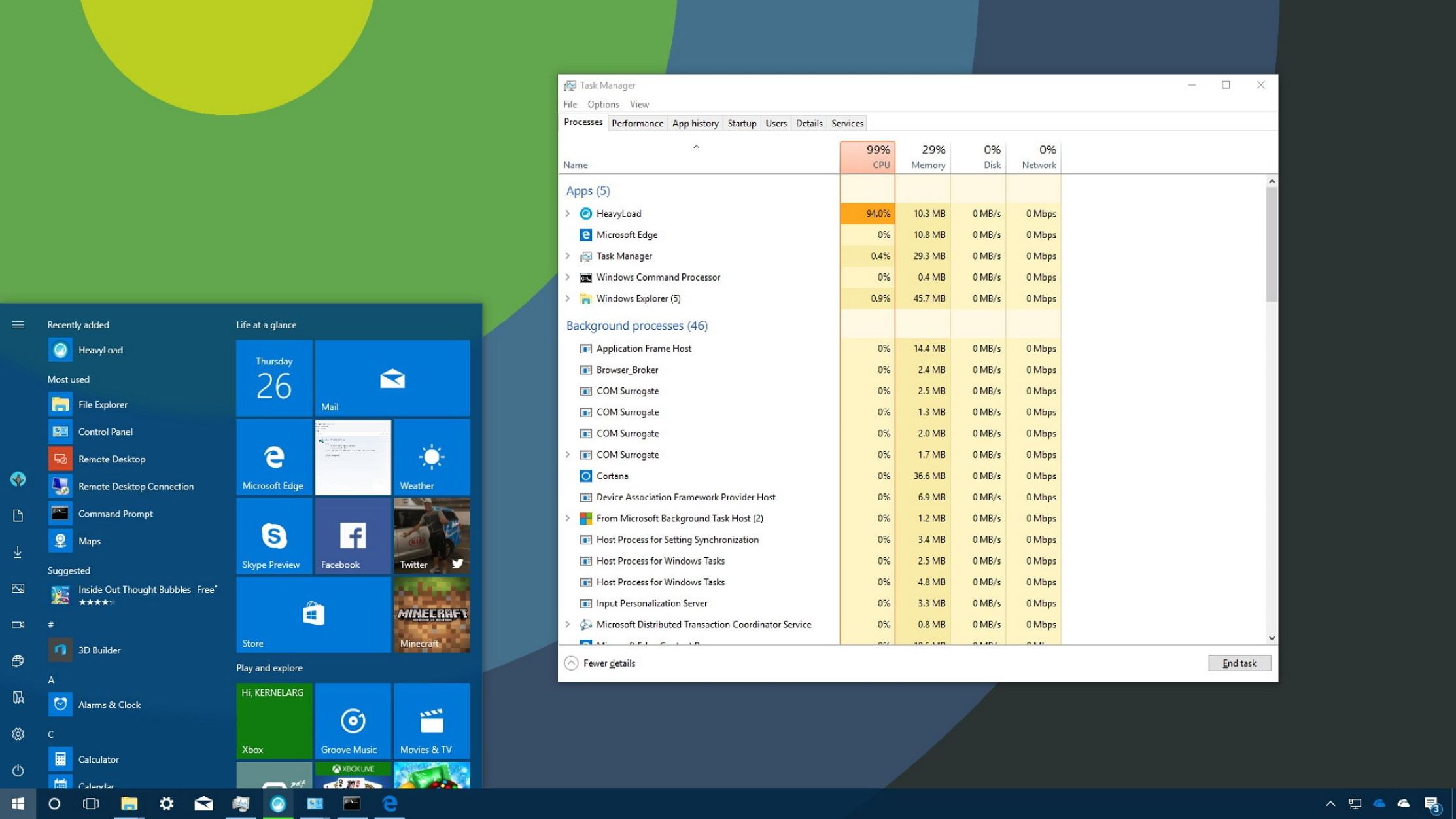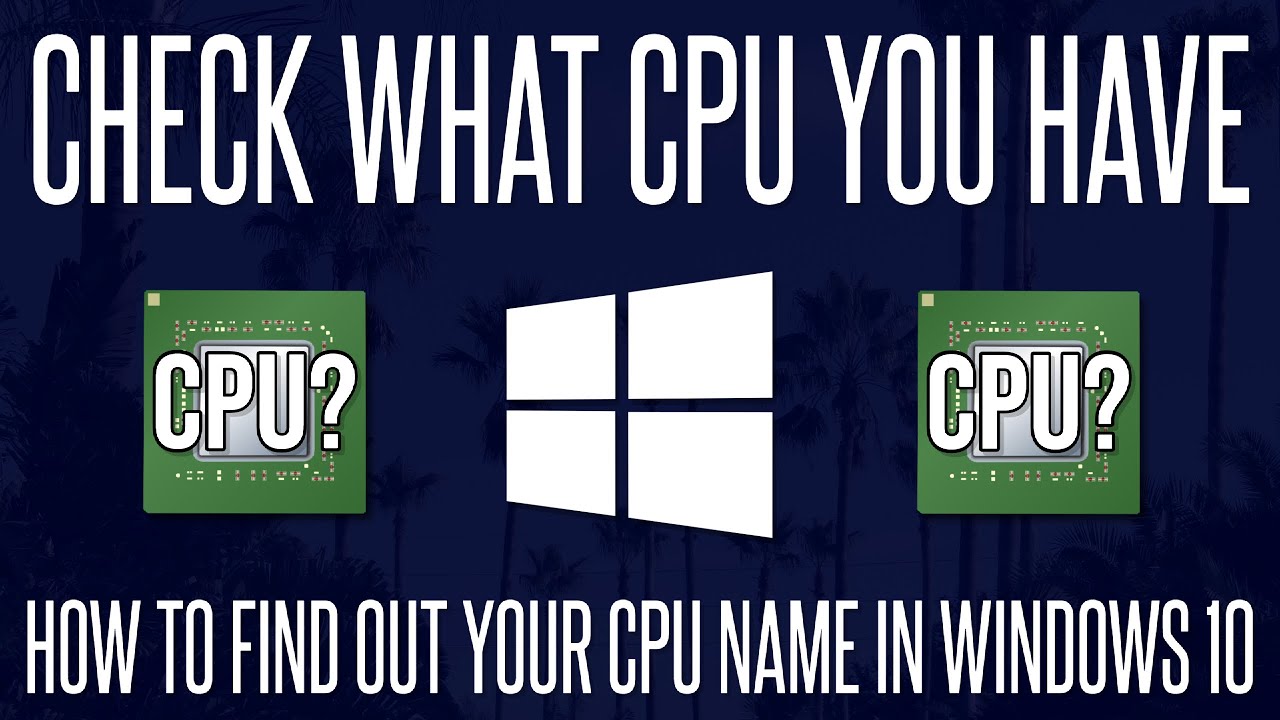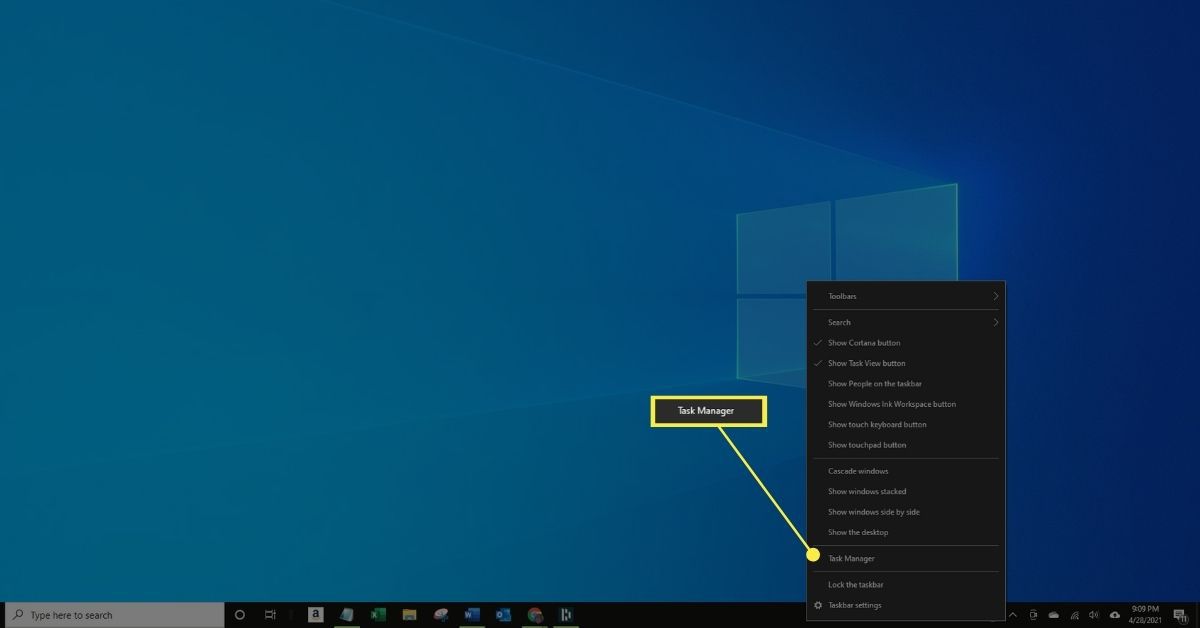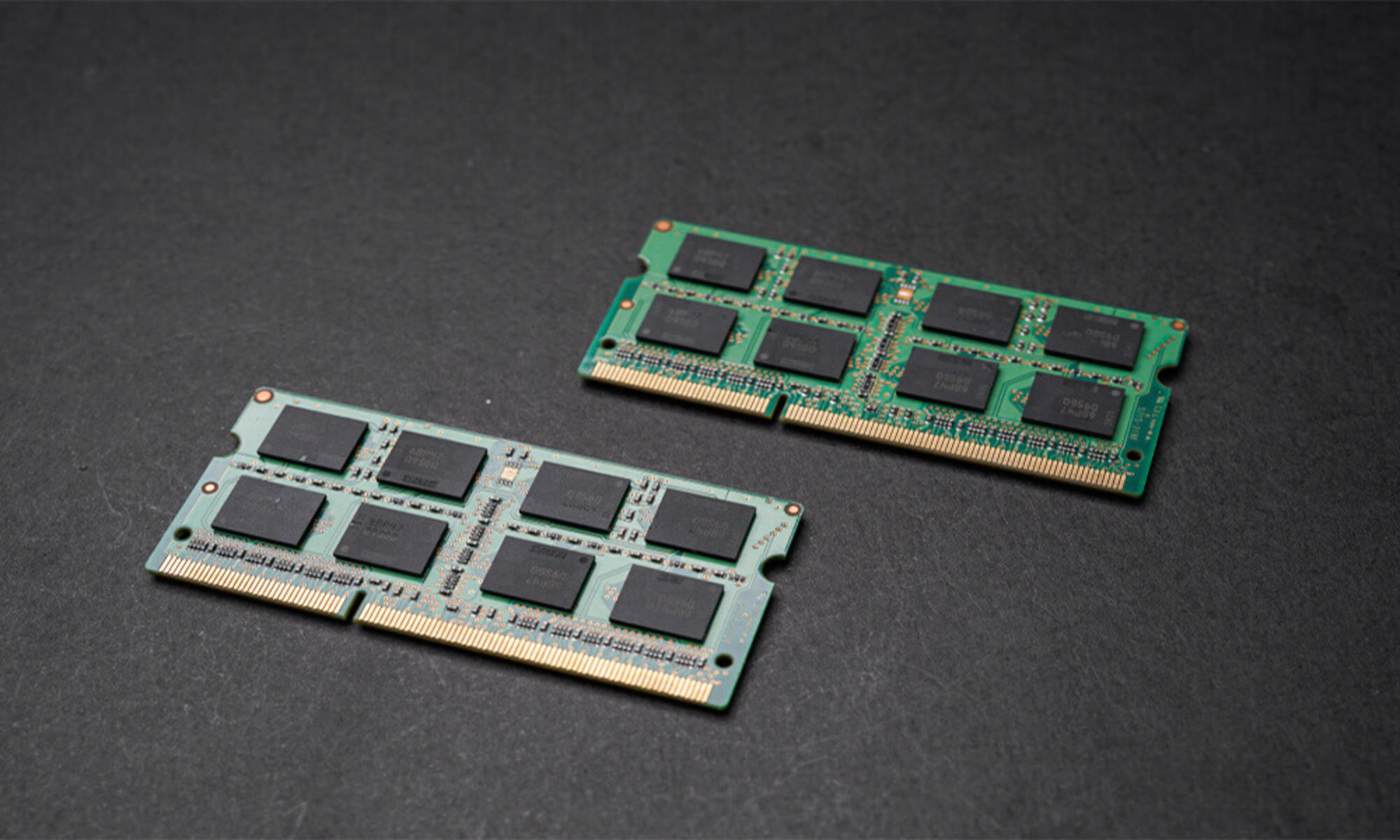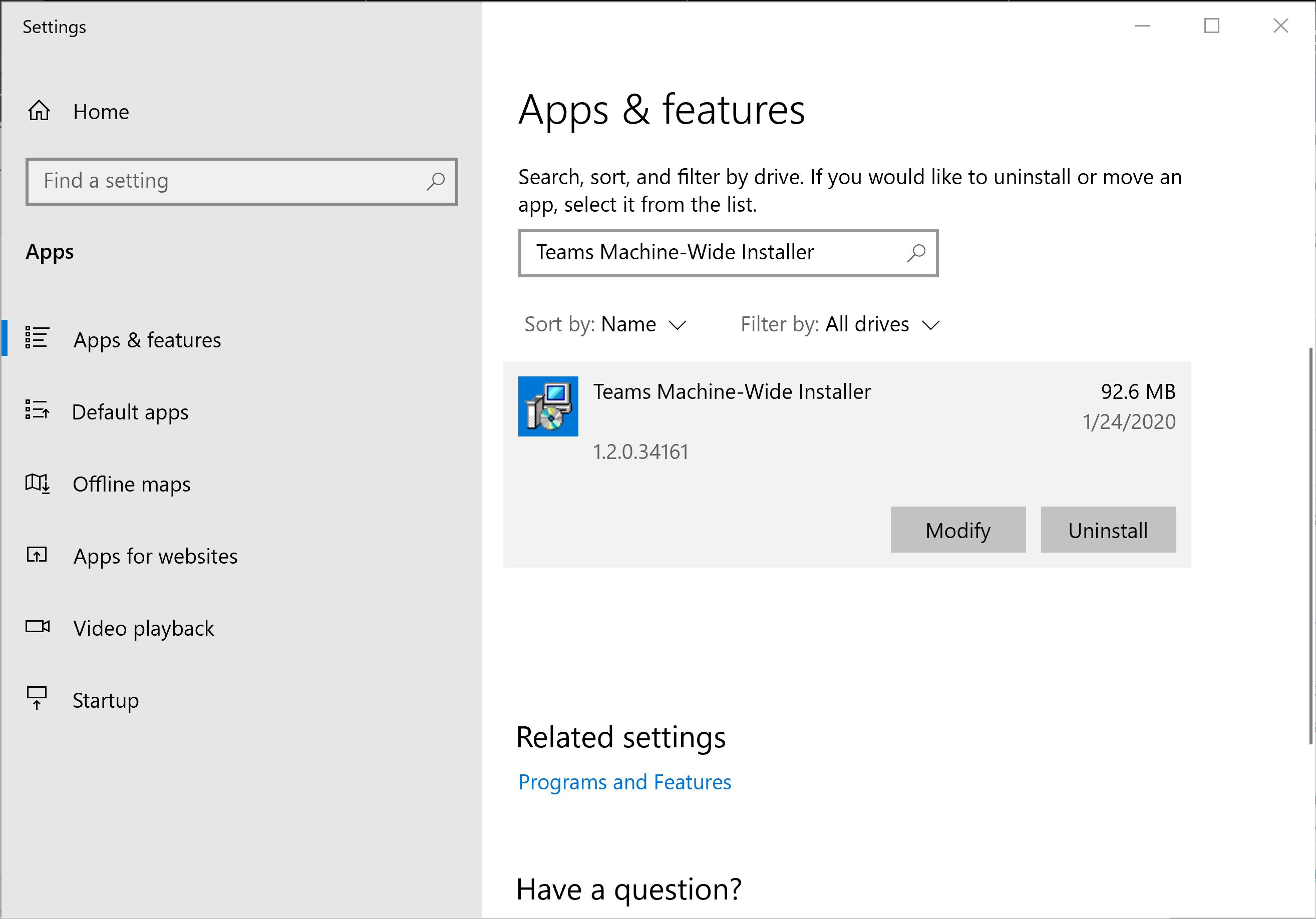Introduction
Welcome to the world of Windows 10! Microsoft’s flagship operating system comes packed with a myriad of features and tools designed to enhance productivity and streamline tasks. One such tool that Windows 10 users frequently rely on is the Task Manager.
The Task Manager serves as a control center, providing real-time information about system performance, monitoring running processes, managing startup programs, and even troubleshooting unresponsive applications. It is a vital component in effectively managing and optimizing your computer’s resources.
Opening Task Manager in Windows 10 can be done in several ways, ranging from simple keyboard shortcuts to using different menus and dialog boxes. In this article, we will explore various methods to open Task Manager on your Windows 10 computer, so you can easily access this powerful tool whenever you need it.
Whether you are an experienced user or a Windows 10 novice, this guide will help you navigate the different methods and choose the one that suits your workflow. Let’s dive in and discover how to open Task Manager in Windows 10!
Method 1: Using Keyboard Shortcuts
One of the quickest and easiest ways to open Task Manager in Windows 10 is by using keyboard shortcuts. With just a few simple key combinations, you can access Task Manager in no time:
- Press Ctrl + Shift + Esc simultaneously to open Task Manager directly. This key combination bypasses the need to navigate through any menus or dialogs.
- If you prefer using the Ctrl + Alt + Del combination, you can simply press it and then click on “Task Manager” in the menu that appears.
Both these keyboard shortcuts provide instant access to Task Manager, allowing you to quickly monitor and manage running applications and processes.
Keyboard shortcuts are particularly useful when you find yourself needing to access Task Manager in a hurry or when your system becomes unresponsive and you need to force-close a problematic application. Having these shortcuts readily available can save you time and frustration.
Once Task Manager opens, you will be greeted with a comprehensive view of your computer’s performance, including information on CPU and memory usage, running applications, and services. You can easily navigate through the different tabs to monitor processes, view performance graphs, and even control the startup programs on your machine.
Using keyboard shortcuts to open Task Manager in Windows 10 is a convenient method that can be easily integrated into your workflow. With just a few key presses, you can quickly access the powerful features of Task Manager and take control of your system’s performance.
Method 2: Using the Taskbar
If you prefer a more visual approach to opening Task Manager, you can utilize the Taskbar, a useful feature in Windows 10 that allows for quick access to frequently used applications and tools. Here’s how you can open Task Manager using the Taskbar:
- Locate the Taskbar, usually found at the bottom of the screen. It contains the Start button and various icons representing open applications.
- Right-click on an empty area of the Taskbar. A context menu will appear.
- In the context menu, hover over the “Task Manager” option.
- Click on the “Task Manager” option when it appears in the submenu.
Alternatively, you can also access Task Manager directly by using a keyboard shortcut. Simply press Ctrl + Shift + Esc simultaneously, and Task Manager will open immediately.
Opening Task Manager through the Taskbar provides a convenient and easily accessible method to monitor and manage your system’s performance. With just a right-click and a few clicks, you can launch Task Manager and gain valuable insights into the processes and applications running on your Windows 10 computer.
Once Task Manager is open, you can explore the different tabs and features to view performance graphs, end tasks or processes, enable or disable startup programs, and more. The Taskbar method offers a user-friendly approach that doesn’t require memorizing keyboard shortcuts, making it ideal for those who prefer a visual interface.
Whether you use the Taskbar for everyday tasks or prefer a more traditional method, opening Task Manager through the Taskbar is a simple and effective way to access this powerful tool and manage your system’s resources efficiently.
Method 3: Using the Start Menu
Another straightforward way to open Task Manager in Windows 10 is by utilizing the Start Menu, a central hub for accessing various applications and features. Here’s how you can open Task Manager using the Start Menu:
- Click on the Start button, usually located at the bottom-left corner of the screen. The Start Menu will open.
- In the Start Menu, scroll through the list of installed applications until you find the Windows System folder. Click on it to expand the folder.
- Inside the Windows System folder, you will find the Task Manager option. Click on it.
Alternatively, you can use the search function in the Start Menu to find Task Manager:
- Click on the Start button to open the Start Menu.
- In the search bar located at the bottom of the Start Menu, type Task Manager.
- As you type, the search results will dynamically update, and you will see the Task Manager option appear at the top of the list. Click on it to open Task Manager.
Opening Task Manager through the Start Menu provides an intuitive and accessible method for users who prefer a menu-based navigation system. It allows you to quickly launch Task Manager and effortlessly manage processes and applications on your Windows 10 computer.
Once Task Manager is open, you can explore the various tabs and features to monitor system performance, control startup programs, and more. The Start Menu method offers a user-friendly interface, making it ideal for those who prefer a more traditional menu-based approach.
Whether you rely on the Start Menu for your daily tasks or prefer the convenience of search, opening Task Manager through the Start Menu is a simple and effective way to access this vital tool and optimize your system’s performance.
Method 4: Using the Run Dialog Box
If you are a fan of using shortcuts and commands, you can open Task Manager in Windows 10 by utilizing the Run dialog box. Here’s how you can do it:
- Press the Windows key + R on your keyboard. This will open the Run dialog box.
- In the Run dialog box, type “taskmgr” (without the quotation marks).
- Click on the OK button or press the Enter key.
By using the Run dialog box, you can quickly access Task Manager without having to navigate through various menus or screens. It is a useful method for those who prefer using commands and shortcuts.
Once Task Manager is open, you can explore the different tabs and features to view system performance, manage processes, and control startup items. The Run dialog box method offers a quick and efficient way to open Task Manager and take control of your Windows 10 computer.
Furthermore, the Run dialog box can be customized by adding Task Manager as a command. By doing so, you can open Task Manager even faster. To achieve this, simply follow these steps:
- Press the Windows key + R to open the Run dialog box.
- Type “shell:startup” (without the quotation marks) in the Run dialog box and click OK.
- Once the Startup folder opens, create a shortcut to Task Manager by right-clicking on an empty area and selecting New > Shortcut.
- Enter “taskmgr” (without the quotation marks) as the location of the item.
- Click on Next and give the shortcut a name, such as “Task Manager”.
- Click Finish to create the shortcut.
From now on, whenever you open the Run dialog box and enter “Task Manager”, you can quickly launch Task Manager with a single command.
Using the Run dialog box to open Task Manager in Windows 10 offers a customizable and efficient method for users who prefer using commands and shortcuts. With a few keystrokes, you can access Task Manager and manage your system’s performance effortlessly.
Method 5: Using the Ctrl + Alt + Del Menu
Another method to open Task Manager in Windows 10 is by using the Ctrl + Alt + Del menu. This menu provides a variety of options to manage your computer, including accessing Task Manager. Here’s how you can do it:
- Press the Ctrl + Alt + Del keys simultaneously on your keyboard. This will bring up the security options menu.
- In the security options menu, click on the Task Manager option.
Alternatively, you can also follow these steps:
- Press the Ctrl + Alt + Del keys simultaneously on your keyboard.
- In the menu that appears, click on the Start Task Manager option.
Using the Ctrl + Alt + Del menu method offers an additional layer of security, as it prevents unauthorized access to your computer while allowing you to open Task Manager easily. This method can be particularly useful in certain situations, such as when a program becomes unresponsive or when you need to end a task quickly.
Once Task Manager is open, you can navigate through the different tabs and features to view system performance, manage running processes, and control startup programs. The Ctrl + Alt + Del menu method provides a reliable and accessible way to access Task Manager and take control of your Windows 10 computer.
Keep in mind that the Ctrl + Alt + Del menu also offers other options, such as locking your computer, switching users, and signing out. Always use caution and ensure that you select the correct option to open Task Manager.
With the Ctrl + Alt + Del menu method, you can quickly access Task Manager and efficiently manage your system’s performance with just a few clicks. It is a versatile method that provides both convenience and security.
Method 6: Using the Search Bar
The Search bar in Windows 10 provides a convenient way to access various applications and features on your computer, including Task Manager. Here’s how you can open Task Manager using the Search bar:
- Click on the Start button, usually located at the bottom-left corner of the screen. The Start Menu will open.
- In the Start Menu, you will find the Search bar located next to the Start button. Click on it to activate the search feature.
- Type “Task Manager” (without the quotation marks) in the Search bar.
- As you type, the search results will dynamically update, and you will see the Task Manager option appear at the top of the list. Click on it to open Task Manager.
The Search bar method offers a quick and efficient way to open Task Manager, especially if you don’t want to navigate through menus or use keyboard shortcuts. It is particularly useful if you have a vast number of applications and files on your computer.
Once Task Manager is open, you can explore the different tabs and features to view system performance, manage processes, and control startup programs. The Search bar method provides an intuitive and accessible approach to accessing Task Manager and optimizing your Windows 10 computer.
Furthermore, you can enhance the efficiency of the Search bar method by pinning Task Manager to the Start Menu or the taskbar. Here’s how you can do it:
- After opening Task Manager using the Search bar, right-click on the Task Manager icon in the taskbar or the Start Menu.
- In the context menu that appears, select either “Pin to Start” or “Pin to taskbar“.
Pinning Task Manager to the Start Menu or taskbar enables you to access it with a single click, eliminating the need to search for it each time you want to open it.
Using the Search bar method to open Task Manager in Windows 10 provides a user-friendly and efficient way to manage your computer’s performance. With just a few clicks, you can access Task Manager and take control of your system’s resources.
Method 7: Using the Task Manager Shortcut
If you prefer a direct and instant way to open Task Manager in Windows 10, you can create a shortcut on your desktop or in a convenient location. Here’s how you can create a Task Manager shortcut:
- Right-click on an empty area of your desktop or the desired location where you want to create the shortcut.
- In the context menu that appears, hover over New and then select Shortcut.
- In the “Create Shortcut” dialog box, type “taskmgr” (without the quotation marks) as the location of the item.
- Click on the Next button.
- Give the shortcut a name like “Task Manager” and click on the Finish button.
Once you have created the Task Manager shortcut, you can simply double-click on it to open Task Manager instantly. This method eliminates the need to navigate through menus or use keyboard shortcuts.
Having a Task Manager shortcut is particularly useful if you frequently access Task Manager or if you prefer having quick access to system monitoring and management tools.
Once Task Manager is open, you can navigate through the different tabs and features to monitor system performance, manage processes, and control startup programs. The Task Manager shortcut offers a quick and direct way to access Task Manager and efficiently manage your Windows 10 computer.
Additionally, you can customize the shortcut’s properties to assign a specific keyboard shortcut. Here’s how you can do it:
- Right-click on the Task Manager shortcut and select Properties.
- In the properties dialog box, click on the Shortcut key field.
- Press the desired key combination that you want to assign to open Task Manager.
- Click on the Apply button and then the OK button to save the changes.
With the Task Manager shortcut and a custom keyboard shortcut, you can open Task Manager with just a few clicks or keystrokes, making it a highly efficient method to manage your system’s performance.
Using the Task Manager shortcut method provides a direct and fast way to access Task Manager in Windows 10. It allows for quick system monitoring and management, making it ideal for users who want efficient access to the powerful features of Task Manager.
Conclusion
Task Manager is an invaluable tool for Windows 10 users, providing real-time insights into system performance and the ability to manage running processes and applications. In this article, we have explored various methods to open Task Manager, catering to different preferences and workflows.
From using keyboard shortcuts to accessing Task Manager through the Taskbar, Start Menu, Run dialog box, Ctrl + Alt + Del menu, Search bar, and creating a desktop shortcut, each method offers a convenient and efficient way to open Task Manager and take control of your Windows 10 computer.
Whether you prefer quick keyboard shortcuts, visual interfaces, menu-based navigation, commands, or shortcuts, there is a method that will suit your needs. Experiment with these methods to find the one that feels most comfortable and accessible for you.
Once Task Manager is open, you can explore its various tabs and features to monitor system performance, manage processes, control startup programs, and troubleshoot issues. Task Manager enables you to optimize your system’s resources and ensure a smooth and efficient computing experience.
Remember, Task Manager is a powerful tool, so exercise caution when making changes or ending processes. Be mindful of the impact your actions can have on your computer’s performance and stability.
Now that you are equipped with the knowledge of various methods to open Task Manager in Windows 10, you can effortlessly access this essential tool whenever the need arises. Take advantage of Task Manager’s capabilities to effectively manage your system and enhance your productivity.
Whether you are a casual user or an IT professional, Task Manager is a key resource for maintaining and optimizing your Windows 10 computer. Stay in control and make the most out of your computing experience with Task Manager at your fingertips.







